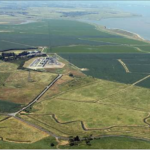Solar power is a fairly recent addition to many homes. There are many questions out there about how they work. Here are a few answers to some of the topics that might be on anyone’s mind who want to know more about this possible global saviour.
Solar Panels Absorb Heat Even on Cloudy Days
One of the most frequently asked questions is whether solar panels are able to absorb heat without the presence of sunlight. It goes without saying that solar power would not be much good is they did not work on cloudy days. The panels are designed to absorb heat from as many light sources and on as many wavelengths as possible.
The more light there is, the more heat will be absorbed by the solar panel. If there it is a cold day, however, your water tank may need a covering of some kind to help it retain the heat that it generates.
Solar Panels Can Withstand Hail Storms
The manufacturers of solar panels test for resistance against heavy hail and strong winds. They will have certification for evidence of this either in their advertising or on request.
Hail stones the size and weight of golf balls are the standard testing size. Both direct impact and ricocheting hail damage resistance are checked and the panels will have passed this rigorous process.
Cracked solar panels are uncommon in countries like New Zealand, which doesn’t have such weather extremes as the US. The panels are protected from direct hits by being positioned at a slant on the roof. If a small fracture does occur, it will not impact the panel’s performance.
On the odd occasion there may be no visible damage from the hail stone, there may still be a tiny loss of performance. This amount is so negligible that the slight loss will not even be noticed.
Converting a 1,500 Square Foot House to Run Off Solar Power Completely
When making the move to completely converting your home to solar power, it is important to first gauge what your electricity consumption currently looks like. A good idea is to install a sensor gauge in the power distribution panel.
Once you have done this, you will have a better idea of where your electricity is being used the most and where it is being wasted the most.
Some of the biggest household wastes of energy can be warm air escaping through cracks in the doors and windows, CFL and incandescent lighting, and poor insulating.
When the need for high amounts of electricity and where energy is being wasted has been sorted out, it is then possible for you to create a plan for the best integrated solar and energy storage.
An initial installation of 21 solar panels with the capacity to generate 320-watts should be enough for the average size home. This will produce 9,000 kWh annually. If this is insufficient, it is always possible to add more battery/storage.
Making the move to solar powering your home as never been as important. It will save you money, raise the value of your property, and set an example for friends and family about how valuable a commodity is energy.




